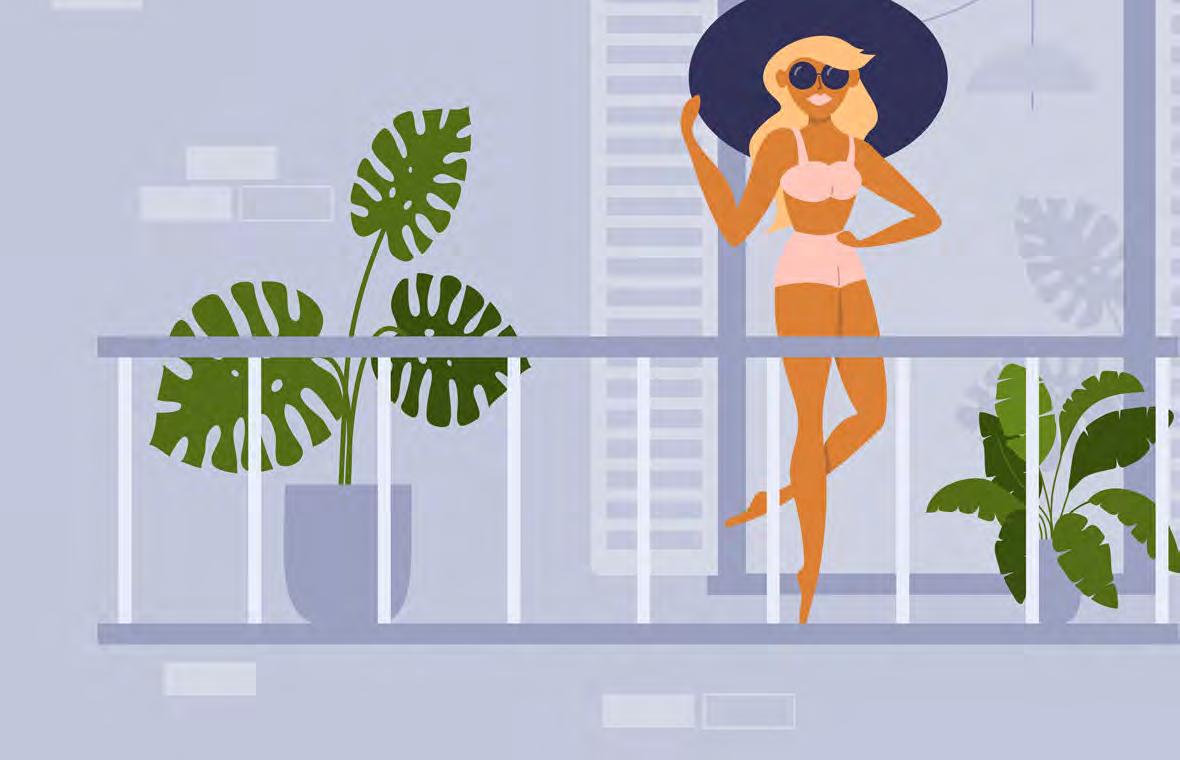
5 minute read
MARBELLA CAN BE GOOD FOR YOUR HEALTH
TIPS FOR KEEPING OUR IMMUNITY IN TIP-TOP CONDITION

Marbella and the surrounding coastal regions are some of the healthiest places to live in Europe, according to recent research. For many reasons the Mediterranean lifestyle conquers most others for longevity and quality of life. And that isn’t just because Marbella has some of the best healthcare options on the continent!
WORDS VICTORIA WOOD
Even in the winter months Marbella offers a far warmer climate than much of the rest of Europe. The Costa del Sol, literally meaning Sunshine Coast, offers very few moments when the sun does not shine throughout the year. Marbella is known to have its own ‘micro-climate,’ as it stands between the coastline and the Sierra Blanca Mountains, playing host to an average temperature of 19º C throughout the whole year with minimum temperatures rarely dropping below 10ºC. You can see from the chart below, that shows maximum, minimum and average temperatures since 2010, (from WorldWeatherOnline. com) that temperatures are pretty consistent year on year.

In fact, the Costa del Sol is the sunniest place in Spain, something residents have been saying for years, but it became official in 2016 when a report from the National Meteorological Agency placed the country’s southern Mediterranean coast at the top of its ranking for the sunniest parts of the country.
Getting a healthy dose of sunshine is actually imperative for good health. Of course baking in it all day long is a terrible idea, but if you take ten minutes without sun protection either earlier in the day or in the late afternoon to literally soak up the rays, you are actually doing yourself far more good than harm; in fact you are providing your body with the perfect amount of vitamin D for the day, something which is extremely difficult to achieve through diet alone.

It is not easy to get a sufficient quantity of vitamin D into our systems as it is scarce among food sources; the ultimate way to achieve the recommended daily dose is through sunlight. Scientists recommend that sun on bare skin is the best way to absorb the essential sunshine vitamin, but to limit the time of exposure to a maximum of fifteen minutes twice a day, following which a high SPF should be applied or shade sought out. During the winter months when the sun is weaker it is less risky to take the sun during the mid-afternoon hours when it is at its strongest. In locations where the sun is less available, as well as in cities where the rays are blocked by pollution, it is quite common for people to suffer from vitamin D deficiency.
WHY IS VITAMIN D SO IMPORTANT TO OUR HEALTH?
Despite it being possible to store the excess in our body fat, it is not an easy task to supply enough vitamin D for our bodily needs in the first place. We need vitamin D to be able to absorb two vital nutrients into the body, phosphorous and calcium, without which we cannot maintain (or grow) healthy bones.

According to an Internal Medicine World Report, vitamin D helps to “prevent bone fractures and osteoporosis, reduce the risk of cancer, especially colon cancer, prostate cancer, and breast cancer, diabetes, heart disease, high blood pressure, heart failure, multiple sclerosis as well as helping to improve lung function”. Those who fail to absorb sufficient amounts can potentially suffer with any of the above and so we see why access to the sun is so important to our health. Sunshine can also contribute to our mental health as it has been proven to lift our mood and raise our spirits.
The coastal regions in the south of Spain also offer the healthiest diet in the world, the Mediterranean diet. This has been globally recognised as one of the healthiest western diets out there. Fresh fish and seafood, olive oil, fresh local fruits and vegetables, pulses and legumes all serve to make this diet top of the list. All the elements of the diet combined help to lower inflammation in the body, improve blood vessel function and reduce the risk of metabolic syndrome and diabetes. It also serves to maintain heart health as well as brain function, being associated with less cognitive decline, reduced risk of Alzheimer’s disease, and better memory and executive function. It is not a new fangled fad diet nor does it hone in on superfoods as key components; it is the inclusion of all the necessary food groups and a wide range of them that consistently makes this the chosen one. And, of course, a glass of Spanish red wine here and there is considered part of the parcel!

Due to the weather being so kind in this region, most of the activities here (as well as vitamin D) are available all year round. Golf is of course a huge draw to the coast as it boasts over 50 courses. You can also take pleasure in the countless hikes and walking trails, rock pools, lakes, rivers, mountain regions, nearby ski resort Sierra Nevada, running and cycling tracks, rock climbing, and nearby surfing, windsurfing and kite surfing. There is no shortage of activities available at any time of year, and if you are brave enough you can even take a mid-winter swim in the sea, from time to time it can be just as warm as in summer!
Sunshine, good diet, and plenty of exercise also contribute hugely to our mental health and happiness as well as maintaining a strong immune system. Taking all this into account it is hardly surprising that the south of Spain has been voted as one of the healthiest places to live! e
This article was originally published on the BRIGHT blog https://by-bright.com/news/. BRIGHT is a developer of luxury, sustainable homes with a vision of improving the quality of people’s lives through the creation of designled homes. In the BRIGHT world design always comes first. by-bright.com










